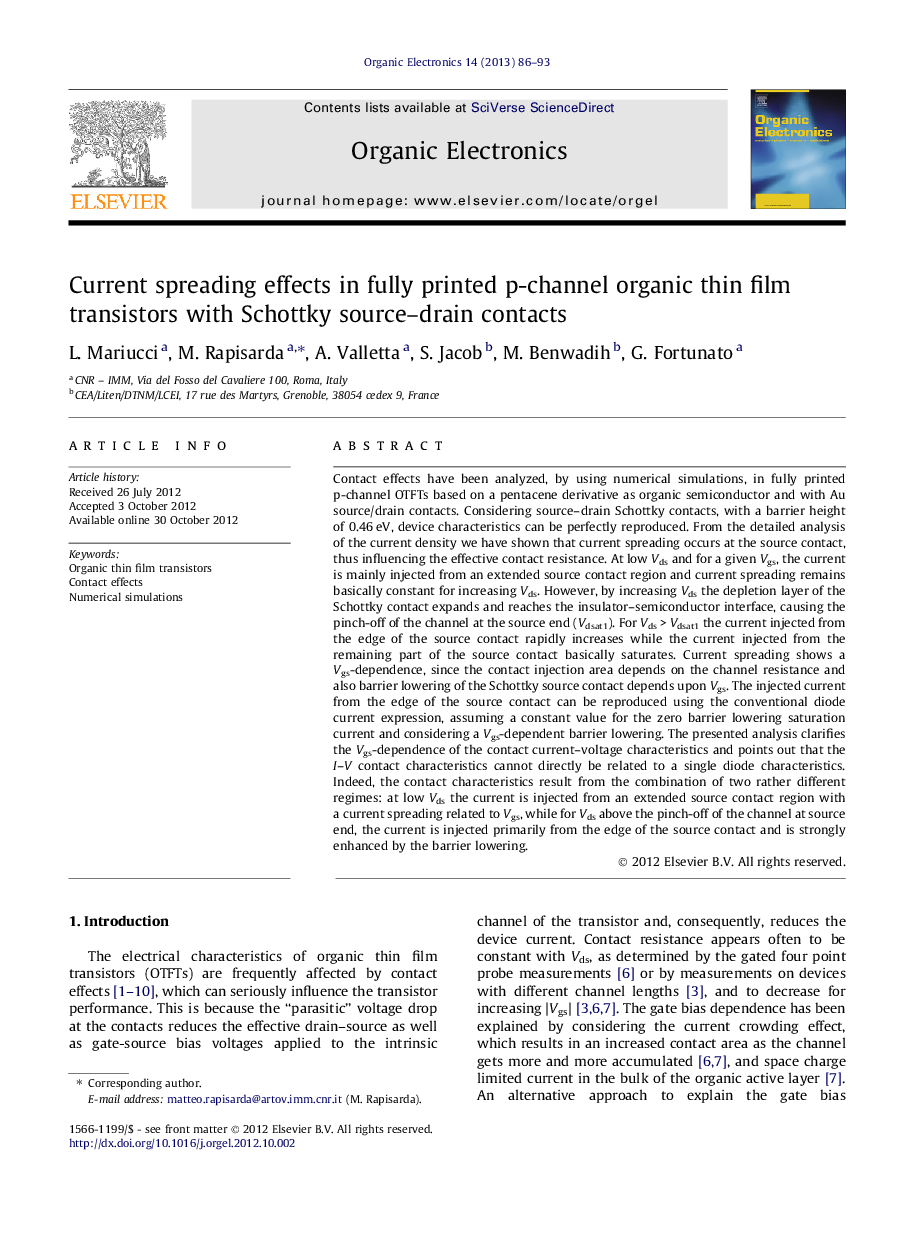| Article ID | Journal | Published Year | Pages | File Type |
|---|---|---|---|---|
| 1263940 | Organic Electronics | 2013 | 8 Pages |
Contact effects have been analyzed, by using numerical simulations, in fully printed p-channel OTFTs based on a pentacene derivative as organic semiconductor and with Au source/drain contacts. Considering source–drain Schottky contacts, with a barrier height of 0.46 eV, device characteristics can be perfectly reproduced. From the detailed analysis of the current density we have shown that current spreading occurs at the source contact, thus influencing the effective contact resistance. At low Vds and for a given Vgs, the current is mainly injected from an extended source contact region and current spreading remains basically constant for increasing Vds. However, by increasing Vds the depletion layer of the Schottky contact expands and reaches the insulator–semiconductor interface, causing the pinch-off of the channel at the source end (Vdsat1). For Vds > Vdsat1 the current injected from the edge of the source contact rapidly increases while the current injected from the remaining part of the source contact basically saturates. Current spreading shows a Vgs-dependence, since the contact injection area depends on the channel resistance and also barrier lowering of the Schottky source contact depends upon Vgs. The injected current from the edge of the source contact can be reproduced using the conventional diode current expression, assuming a constant value for the zero barrier lowering saturation current and considering a Vgs-dependent barrier lowering. The presented analysis clarifies the Vgs-dependence of the contact current–voltage characteristics and points out that the I–V contact characteristics cannot directly be related to a single diode characteristics. Indeed, the contact characteristics result from the combination of two rather different regimes: at low Vds the current is injected from an extended source contact region with a current spreading related to Vgs, while for Vds above the pinch-off of the channel at source end, the current is injected primarily from the edge of the source contact and is strongly enhanced by the barrier lowering.
Graphical abstractFigure optionsDownload full-size imageDownload as PowerPoint slideHighlights► Fully printed p-channel OTFTs can be modeled introducing Schottky contacts. ► Current spreading occurs at the source contact, showing both Vds and Vgs dependence. ► Pinch-off occurs due to expansion of the depletion layer of the Schottky contact. ► At low Vds, the current is injected from an extended source contact region. ► For Vds above the pinch-off, the current is injected primarily from the edge of the source contact.
